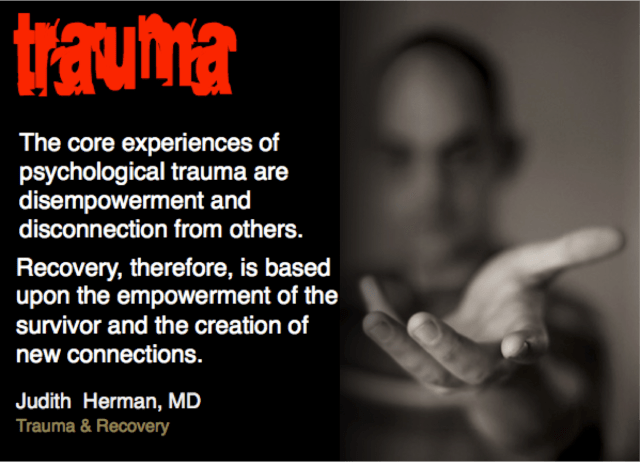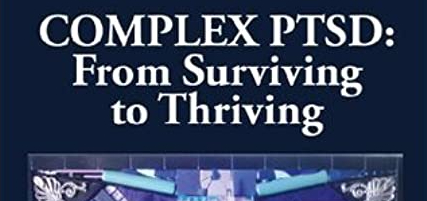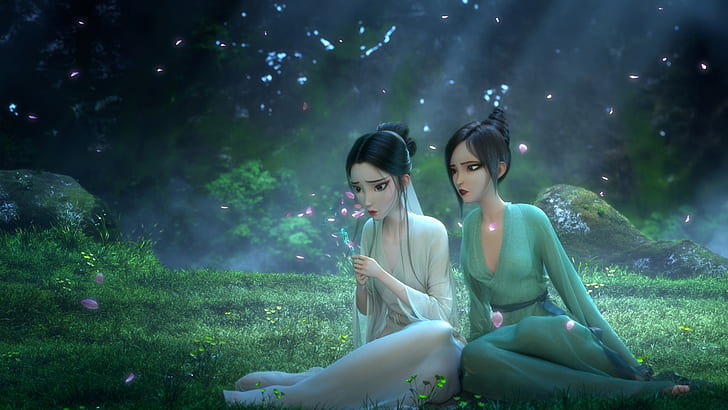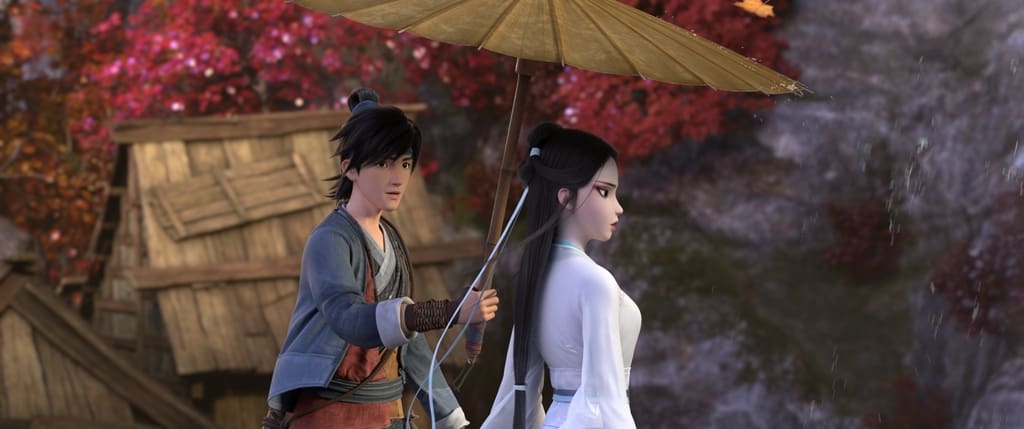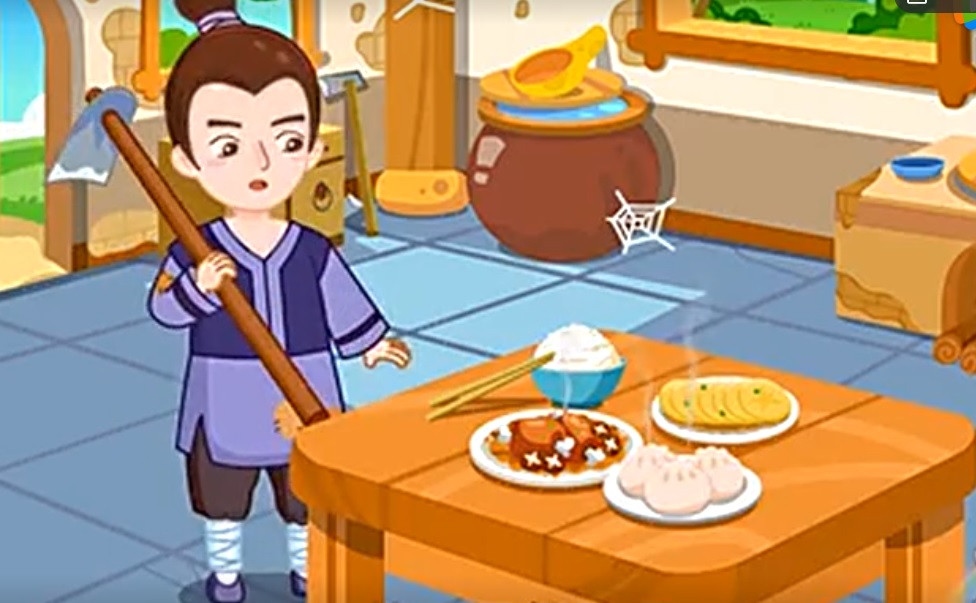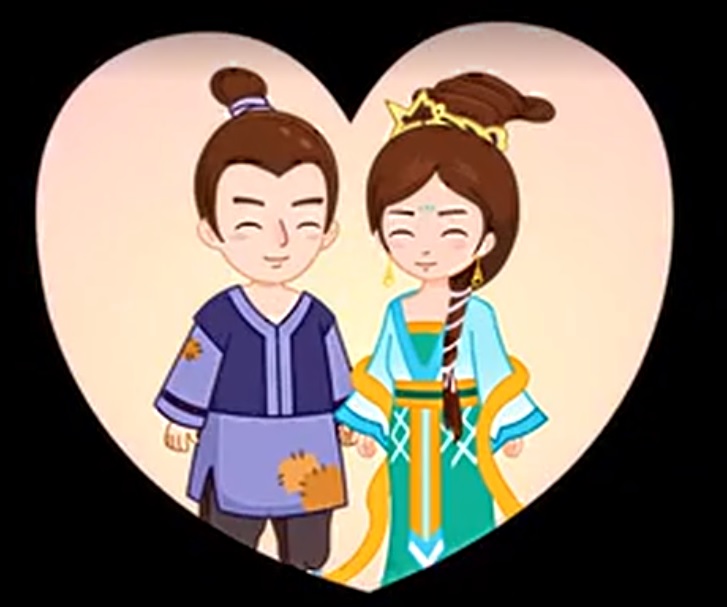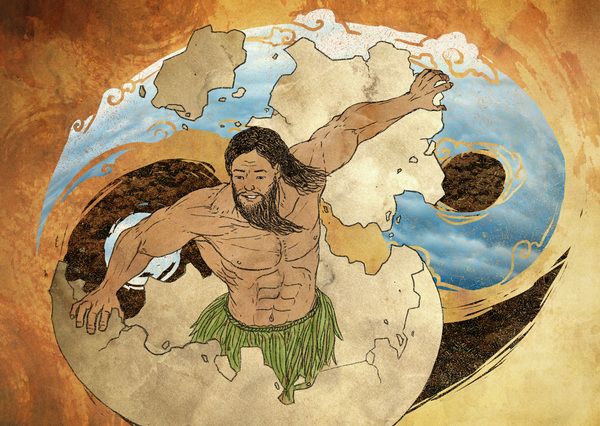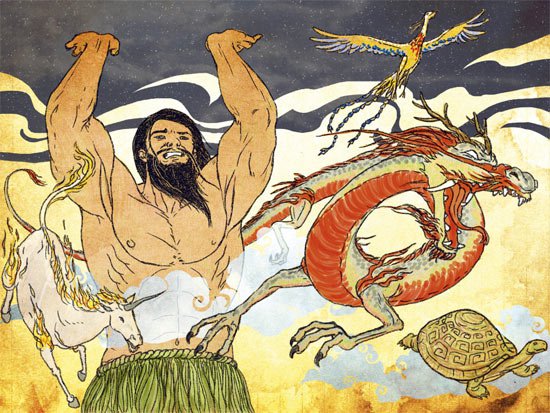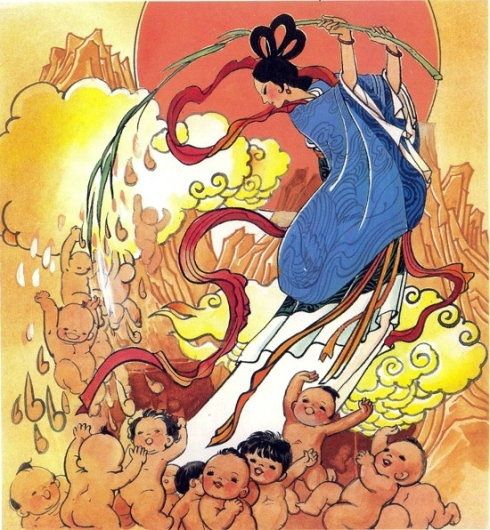This remains one of my favorite books for trauma recovery. I read it right after CPTSD: Surviving to Thriving, so close that they seemed like one big book. I finally had a chance to re-read it almost a year later. Those wait times at the public library are intense, but I guess I’m glad so many people are reading this kind of book, especially during COVID. This book currently lives in my top 5 list for therapy books, and I highly recommend reading them together like I did, as they are very complementary. This post is very long because this book is very full of important ideas. I hope you stick with it.
Bessel van der Kolk is a very accomplished and experienced psychiatrist and researcher in the area of trauma. He started working with Vietnam veterans in the 1970s (before PTSD was a known diagnosis) and has been instrumental in hundred of studies and research projects to better understand the impact of both single traumatic events and long term traumatic exposure. His work with war veterans led him to understand how childhood trauma was both similar and different from combat trauma, and he has been vital to the understanding of CPTSD. He is an expert the experts defer to. “The Body” was published in 2014, so it’s fairly up to date as far as technology and research techniques described.
This post is so much longer than other book reviews because the book itself covers so much. It tells the history of understanding and treatment of trauma. It explains the scientific studies used to advance that understanding and treatment. It addresses the social, political, and economic barriers to the study, understanding, and treatment. It shares case studies of individuals suffering from and recovering from trauma. It shares statistics of the staggering number of people who have been traumatized in one way or another in life. It addresses the critical link between “mind, brain, and body” in how trauma affects us and how we heal from it. And it looks into a range of treatment options, explaining how and why they work, or don’t. Yet somehow, Van der Kolk does all of this in a casual and personal narrative style that carries the reader through his life’s work in a compelling and interesting way.
Just My Highlights
There’s no way for me to even try to summarize everything that Van der Kolk talks about here. I won’t do it justice. I stress again how worthwhile a read this is for everyone. Understanding trauma and the historical, social, and political context of cycles of abuse is the only way we will ever make changes. There some standout points that I want to zero in on for my review, and some opinions I’m squeezing in because this might be my last therapy book review post.
The Historical Cycle of Trauma and Suppression
Hysteria and Sexual Abuse
In the mid-late 1800’s some ‘scientists’ named Jean-Martin Charcot and Pierre Janet were studying hysteria. Although a lot of the people diagnosed with hysteria were women, there were also cases of “hysterical blindness”, “hysterical paralysis”, memory loss, and a host of strange behaviors that occurred in people across the gender/age spectrum. At first, Charcot was looking for a physical cause, but when he was unable to find one, he turned to hypnosis, and came to the conclusion that all these problems were being caused by the repressed memory of traumatic events.
Freud came along and got really into finding out what those traumatic events were and got deep into talk therapy, actually listening to his clients (not something doctors had done before). He determined that the young women suffering in this way were all suffering as a result of sexual abuse at the hands of an older male relative. He thought he had a great breakthrough, until he realized that it would mean that a huge number of the well respected men in Vienna would be guilty of raping their daughters and nieces, including his own father. He thought that maybe the promiscuous FRENCH could be doing that, but he just couldn’t countenance that his own Viennese men could be doing the same. He backpedaled and changed his theory, placing the blame on the girls as “seducers” of their fathers and uncles.
World War I & Shell Shock
Then a few short years later, as WW1 came around, and there were British soldiers having weird symptoms after battle. The term “shell shock” was coined and some scant treatment began. However, as the tide of the war shifted against the British, the top brass decided that “shell shock” was just a coward’s excuse. That “real men” don’t break down from a little light war trauma, and they banned the use of the word in any documents. Some soldiers were arrested, imprisoned and even executed because they had trauma that no one in charge wanted to believe in.
There were plenty of doctors pleading to be allowed to study and treat it, but the gag order was politically expedient to win the war. Another generation was blamed for exhibiting symptoms of trauma that those in power had caused. In America, the WW1 vets had it a little better for a brief moment. They were temporarily greeted as heroes and awarded combat bonuses, the money to be given as a delayed payout. When the depression hit, the veterans rallied in DC to ask for their bonuses so they could afford housing and food. The police and army were sent in to scatter them and burn their camps. Congress voted to never give the vets their money, and they were left to fend for themselves as a new crop of young men were lined up for the slaughter of the next big war.
World War II, Vietnam & PTSD
WW2 of course went through just about the same thing. Suddenly “shell shock” was rediscovered to be real. It was even treated for a hot minute before being dismissed again when the reality of the extreme damage being done to a generation of people in the name of war turned out to be too big a price tag for the law-makers at home. Generals and politicians would much rather believe that men and women are faking it, or fragile, or damaged in some way that the leadership cannot be held accountable for. It wasn’t until the Vietnam veterans came back that we finally started to see a break the cycle of discover and repress. PTSD is now a well recognized condition, but the battle isn’t over. It’s currently recognized almost exclusively for combat veterans, with some exceptions for civilians in war, major catastrophes like the 9-11 building collapses, or devastating natural disasters.
Van der Kolk and his associates, however, found that trauma comes far more frequently and affects far more people than this commonly accepted understanding of PTSD can encompass. In addition, the results of ongoing or repeated trauma, of childhood trauma, or of sexual trauma may have many similarities to PTSD as described in the DSM, but it’s not 100% the same and more importantly, the treatments are not equally effective. These discoveries led doctors like Van der Kolk to advocate for a new diagnoses in the DSM: Disorders of Extreme Stress Not Otherwise Specified (DESNOS) aka Complex-PTSD, or CPTSD for short.
The DSM is BROKEN
What is the DSM? Some of you may know it well, others may be totally confused. DSM stands for Diagnostic and Statistical Manual of Mental Disorders and it’s the big book of Mental Health. Doctors and insurance companies use the DSM for diagnosis and treatment, but in America anyway, more importantly MONEY. Insurance will not cover a diagnosis or treatment that is not listed in the DSM. This gets tangled up very quickly, because when health and money meet in a room, health loses every time. I can’t even scratch the surface of everything that is wrong with the American DSM model, but in regards to PTSD and CPTSD the main problem is that they are NOT the same.
Multiple studies have shown over and over that they are not the same, and that treatments for one do not work for the other (or may work, but less effectively). As a result of this, people who are suffering from prolonged traumatic exposure get diagnosed with: ADD, ADHD, GAD/anxiety, depression, bipolar, BPD/borderline personality, anorexia, bulimia, OCD, alcoholism, drug addiction, and a bunch of other acronyms because the doctor is trying to address their symptoms in a way that fits the DSM. The best case scenario is that they do this because they know the insurance won’t pay for it if it doesn’t match the book. The worst case is that they simply do not believe any diagnosis not in the book is real.
DSM 5 Defines Trauma
I did some extra reading about the DSM, since van der Kolk only mentions the failed attempt to get CPTSD into the DSM 4 in 1994, and we are currently on DSM 5. I wanted to know if any progress was made. The answer is unfortunately, not really… They did expand the diagnostic criteria for PTSD, and added a “children under 6” category, but it’s still not going to cover most people in the CPTSD range.
What is considered “trauma” by the DSM is extremely limited : “The person was exposed to: death, threatened death, actual or threatened serious injury, or actual or threatened sexual violence”. It fails to reflect any of the studies of long term exposure to many other types of trauma, such as the ACE study, nor has any relation coercive control style abuse.
I discovered another diagnostic manual called the ICD-11 (International Classification of Diseases) has added a separate category for CPTSD. The bad news is that it is very limited in scope. It still focuses on exclusively horrific traumatic circumstances where escape is unlikely, like torture, genocide, slavery, etc. “Prolonged domestic violence” is there, but not well defined. There remains no reference to the coercive control or psychological control that prohibits escape, nor of issues like systemic racism or medical trauma. In addition, it requires flashbacks (intrusive memories & images) as a symptom, which are common in PTSD, but according to most experts, not in CPTSD where emotional flashbacks (which lack a visual component) are more common.
Treating a Symptom Instead of a Cause
Without the ability to get a correct diagnosis for the underlying cause, many CPTSD sufferers are limited to receiving treatment only for their symptoms, so while these people may experience relief of symptoms while under treatment, their suffering resumes as soon as that treatment stops. Not only is this a massive healthcare disservice, but it’s contributing to a huge waste of money. Traumatized individuals are unable to function in a healthy way, and often need government resources for chronic health issues, job loss, and criminal behavior. (if you need more proof of this, read the book)
Additionally, some of what are seen as “problems” might really be “solutions” within the context of trauma. An alcoholic is not merely physically addicted to alcohol; their drinking is a self prescribed treatment to forget some pain they are unprepared to deal with or in some cases even acknowledge. The same can be true for any addiction including gambling, drugs, sex or food. In the Realm of Hungry Ghosts by Gabor Maté is an excellent exploration into the traumatic roots of addiction including socially prized addictions like overworking.
Obesity is another great example of why we can’t just treat symptoms. It is a major health epidemic in modern America, but if people are overeating as a trauma response, a defense mechanism, or to self-sooth, then no diet/exercise program will ever be successful until the core wound is healed. Van der Kolk explains that many obese patients also have a history of sexual molestation, assault, or abuse. Others may have been bullied or beaten up when they were small, and may feel strong and powerful by being larger than anyone else in the room. They feel safe from future assault or abuse because of the extra weight.
Of course, most people suffering this are not consciously aware of this in the mind. They do not think “fat will protect me” as they have another scoop of ice cream. They just feel better when they eat, so they eat. When they go to a doctor for help, it should not only be about diet, exercise, or surgery, but should include a look for deeper mental health causes that lie at the root of addiction issues. The problem with that is, as long as the DSM and major health organizations refuse to recognize that systemic social problems and resultant trauma are causing all these health problems, patients will continue to be misdiagnosed, mistreated, and inevitably blamed and shamed when their incorrect treatment fails.
The Cycle Isn’t Broken
My takeaway from all of this, the history and the DSM, and stories in the book of how van der Kolk and his associates were thwarted from doing research or having that research recognized, is that we have not escaped the cycle of notice and repress. We are still as a society unwilling to recognize that parents, caretakers, leaders and other people who are supposed to love and protect us are the deep root cause of untold amounts of pain and suffering. Crime, violence, illness, and death are all linked to childhood and domestic trauma, yet we can’t even properly diagnose or treat it. We’re looking for ways to blame the victims, a faulty gene or just a lack of moral fiber, but heavens forfend we look hard at ourselves and see the damage that our blindness is causing.
So many of the books I’ve read on this journey talk about the fact that trauma is caused by what the brain perceives as a threat, not what is objectively a threat or agreed upon by society to be a threat. Limiting PTSD and CPTSD diagnoses and treatment to people who have experienced “bad enough” trauma by someone else’s standards is part of the denial and suppression cycle. Of COURSE genocide and sexual slavery are undeniably horrible. OF COURSE the people who experience that are traumatized. What Van der Kolk and many others are trying to show us is that trauma is neither rare nor limited to such obvious horrific sources — that in reality, trauma is widespread and pervasive in the world, and that it comes from places we don’t want to see.
Although the scientific and ethical advances of the last 40 years enable us to look back at the hysterical women or the shell shocked soldiers and finally recognize the injustice done to them, we are not immune to selective blindness and denial. Just like Freud could not admit his own father or other “respectable” men of the city were committing atrocities on their own daughters, just like the generals could not accept that the decision to send young men into war was dooming their minds as well as their bodies, modern society struggles to accept that parents, teachers, lovers, doctors, and bosses are responsible for traumatizing millions under their care. Being able to admit the reality should not be about blame or retribution, but rather about truth and reconciliation. Until we are willing to face the facts, millions of people will be barred from true healing, and inevitably pass their pain on by traumatizing others in continued generational cycles.
Mind, Brain, Body
The other main takeaway of this book is the way in which the brain and body interact. Van der Kolk refers to a triad of “mind, brain, and body”, which has some nice literary overtones, the rule of three is a popular way to go. It also, I think, helps people to bridge a previously unbridgeable gap between mind and body. Starting with Aristotle and made ‘accepted fact’ by Descartes, a lot of people for a large part of history have believed that the “mind” is a totally separate thing from the “body”. Despite the fact that Descartes was a philosopher and had no physical or medical evidence to support his theory, it was so pervasive in the minds of the educated men that when modern medicine made the scene, no one really thought to challenge this “accepted fact”. At most, doctors believed that while the mind may be able to exert some control over the body through conscious effort or willpower, that the feed was strictly one way. ‘Mind over matter”, right? Wrong.
Advances in Science Change Our Understanding
As the study of neurology really came into its own in the 1990s, we got to learn all kinds of amazing stuff about how the brain works. The brain is a physical organ that runs on chemical and electrical reactions and controls the body, more or less. But… it is also where the mind resides. We still haven’t found the “seat of consciousness” in the brain, because it turns out that what makes us “us” is a very complex system of electro-chemical reactions, only a very small amount of which we are aware of at any time.
Start by thinking of your “mind” as the part that does the thinking (your “self”, your autobiographical memory, your inner monologue, and such); and your “brain” as the gray stuff inside your skull that releases hormones and neurotransmitters, and handles the auto-pilot for all the organs you can’t be bothered to think about (what does a spleen actually do? Your mind doesn’t know, but your brain does); and then your body is everything else. Then you can start to see where van der Kolk is going with this triad, but it’s not really three separate things, it’s more like three concentric circles. The mind, after all, resides in the brain, and the brain resides in the body. They are connected intimately and they are inseparable, and the flow of information goes in all directions.
We think of our body as being under our mind’s control, yet, that’s barely true. You don’t control most of your organs. You can hold your breath for a bit, and control your toilet needs for a short time, but other than that, you can’t really interfere with the body’s functions. Moving my fingers along the keyboard is a conscious effort of my mind, but if there’s an unexpected loud noise while I’m working, I will flinch and look around well before I’m aware of doing so. My “mind” doesn’t make that decision, my brain and body get on about it without me.
In fact, there is a lot that happens in our bodies that affect our brains, and then in turn change the way we think. For one example, the vagus nerve is a large nerve road that leads up from the gut into the brain, but most of the information that travels along it is not sending instructions down from the brain, but instead is sending information up from the guts/abdomen/lungs/heart to the brain. Van der Kolk examines the way in which mental health issues manifest in the body, and even more cool, how engaging the body in therapeutic techniques can help to heal mental health.
The Body Manifests the Damage of the Mind
In addition to the long list of mental health issues that can result from unrecognized PTSD or CPSTD, there are a lot of body health issues that can crop up as well. We can all think of physical reactions to stress like an upset stomach, or a headache, but that’s just the tip of the iceberg. As the trauma goes untreated and often suppressed or ignored, the body takes up the symptoms. Thus, the name of the book: The Body Keeps the Score. Things like asthma, chronic fatigue, chronic pain, epilepsy, obesity, diabetes, heart disease and cancer are all common body reactions to long standing traumatic suffering. The ACE study (Adverse Childhood Experiences) done with the CDC and Pfizer found that people with an ACE score of 4 or more had a much much higher incidence of all these physical health issues*. That means that the more types of trauma children suffer at home, the more likely they are to be sick as adults.
*NOTE: the ACE study is not a diagnostic tool. It was a study of trends over a population and should not be taken as an indication for any individual. Many contributing factors for trauma and recovery are not accounted for in ACE. Not all children who experience multiple ACEs will have poor outcomes, and not all children who experience no ACEs will avoid poor outcomes—a high ACEs score is simply an indicator of greater risk
I was personally struck by the chronic fatigue and pain issues because I struggled with both while I was still a teenager living in my mother’s house. In the end, I was told I had fibromyalgia: a diagnosis that is based on patient’s reported symptoms and a lack of evidence for any other clinical diagnosis. I had many other health problems while under the control of my parents that diminished as I gained independence and distance, only to return in other stressful times of my life.
It’s All In Your Mind, But Not The Way You’ve Been Told
“Psychosomatic” is a word that is far too often used as a synonym for “imaginary”, and yet, that’s not what it means. Psycho means “of the mind” and somatic “of the body” so, yes, it means that a bodily symptom is caused in the mind rather than from an outside agent like a virus, bacteria, tumor, etc. Chronic illness sufferers frequently have physical symptoms ignored, dismissed, and even been accused of making things up for attention. Far too many medical professionals are stuck in an outdated model of medicine in which the mind and body are separate, and must be treated separately, so that if no evidence of illness exists in the body, then they believe no illness exists. Have you ever told your doctor something hurts only to have them say, “well, it shouldn’t” or worse “no, it doesn’t”?
As I read this book, I began to see the connection between my original trauma, my trauma triggers, and my health issues, and I gained validation for my rejection of the idea that any of my physical issues are “all in my head” in the standard western medicine pejorative use of the phrase. I learned a new way of understanding what “in my head” really means. Van der Kolk and his associates have conducted a number of studies that demonstrate that the physical symptoms generated by traumatic stress are real, and they can be healed by addressing that trauma. It may be “in our mind”, but it’s also in our brain and in our body because those three concepts are not truly separate.
How To Heal Trauma
Professional Help
Most professionals in PTSD/CPTSD agree that it is necessary to access and integrate traumatic memories in order to heal. Up until very recently, the primary way to do this has been talk therapy: a specialist helping to guide a patient to talk about the traumatic experience and then guide them into placing it in the past. Exposure therapy and hypnosis have also been used with alternating success. Hypnosis got a bad rap for supposed “planted memories”, and that turned out to be mostly media hype, but the damage is done. Exposure therapy can work for some things, but a lot of trauma survivors end up being re-traumatized by exposure therapy, not healed. Talk therapy has the best track record, but it’s hard because you have to form a trust-based relationship with a trained therapist which takes a lot of time and money.
There are a few other therapies that need to be done by a professional that use the brain body connection. One of these is EMDR (eye movement desensitization and reprocessing), it uses bicameral stimulation to help patients access traumatic memories and to integrate them into the proper context. EMDR is not hypnosis; it does not require a trusting relationship nor rely on the doctor to uncover or interpret anything, and it has a pretty good success rate with very low recidivism. It works better on PTSD than CPTSD, and better in adult onset trauma than for childhood trauma. No one really knows why the bicameral stimulation works this way. The leading theory is that it simulates a sleep state (REM) when the brain sorts memories out of the “now” bin (hippocampus) and into the “past” bin (neocortex). Memory integration is a normal function of sleep, but traumatic memories are often stuck in the “now” bin, which is why they still feel so urgent. I know the chances of it working for me are not great, but I would still like to try it if I ever get the opportunity.
Another method is neurofeedback. Using an EEG to measure brainwaves, doctors can show patients what various parts of their own brains are doing by translating the brainwaves into audio or video signals. Then the patient can learn to control certain types of brainwave activity through a kind of trial and error while getting easy to understand feedback from the music or video. Being able to hear/see our own brainwaves gives us a concrete goal to focus on and enables us to use the mind to control the brain.
The last one examined in the book is “psychodrama“, which sounds like what you go through with your crazy ex, but it’s actually a kind of theater therapy. Actors and doctors worked together to create a variety of programs to help trauma survivors process their feelings. It can give patients a way to roleplay out experiences in a safe environment, thus getting resolution to previous instances, or plan on how to handle future triggers. It can help patients find words they need to express their feelings, or it can even provide words when the patients cannot find their own. An episode of the medical drama New Amsterdam showed the hospital psychiatrist making vets with PTSD put on a performance of one of Sophocles’ plays about a soldier abandoned by the military after being wounded. It is not a medically accurate TV show, but it was cool to see psychodrama being used in pop media, and that particular play is actually used in psychodrama therapy in real life to help soldiers process feelings of loss and betrayal in therapy for PTSD.
Self-Help
The big message of this book is that our mind, brain, and body are inextricably interconnected. We can’t treat symptoms without treating the cause. In order to heal, we must heal all three together. The mind-body connection flows both ways. The mind can make the body sick, but the body can also heal the mind. If you can’t afford or even find a therapist who is knowledgeable in CPTSD or the techniques listed above, you can do body work on your own.
Body work, or somatic therapy, is a way that trauma survivors can learn to feel safe and present in our own bodies again. Things like massage, yoga, meditation, dance, or tai chi can all help a trauma survivor to re-establish a healthy mind-body connection and learn how to listen to the signals of the body again. It’s not necessary to do those activities with any particular focus on your trauma because the benefit comes from establishing a deep connection between your mind, brain, and body, and these activities on their own have been shown to reduce symptoms of depression, anxiety, invasive thoughts, emotional dysregulation, and executive dysfunction when done regularly over time.
It’s hard to believe that something so simple (and free) can have such a large impact on our mental and physical health, but if you’re struggling, then it can’t hurt to try. There are tons of free YouTube videos, apps and games for the phone, and even a few gaming systems that take all the guesswork out of what to do, just follow along for 10-20 minutes at a time. A quick Google search will turn up dozens, but here are the ones I use:
Yoga: I enjoy going through this 30 day challenge because it’s a little different every day, and I don’t get bored. It’s ok to skip activities that hurt or are too hard.
Grounding/Mindfulness app: PTSD Coach was designed for veterans and is sponsored by the VA, but you don’t have to be a vet to use it. Even though it’s aimed at combat PTSD, many of the free activities are good for anyone in need of more grounding and mindfulness.
The Tripp app on Oculus Quest: I know not everyone can afford a gaming system, but if you happen to already have one in your home, this is a stunning audio-visual experience that makes daily meditation and breathing exercises a real joy.
If you’re like me, and you want to see the science behind why this works, then there’s no better place to start than this book.
